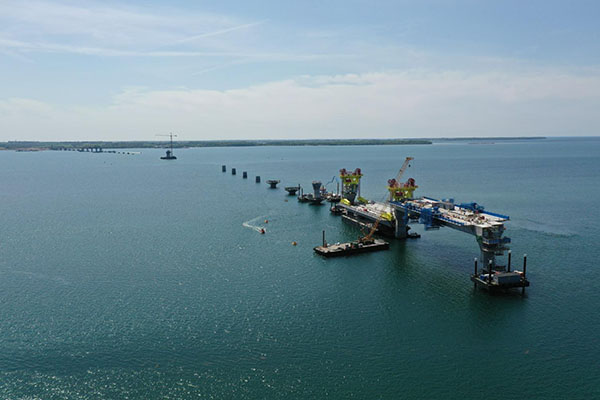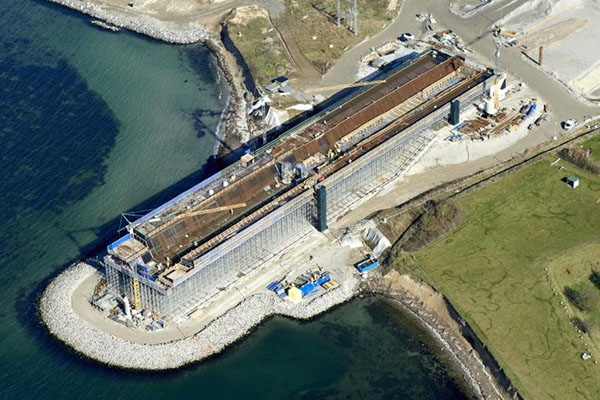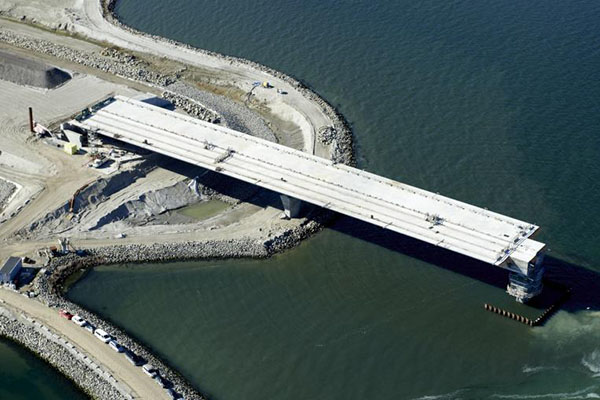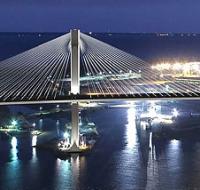
Storstrøm girder installation Credit: Vejdirektoratet
A 4,000t prefabricated girder 73m long and 24m wide has been installed near Masnedø. It is the fifth prefabricated girder to be sailed out and lifted into place on the 3.83km bridge.

Storstrøm girder installation Credit: Vejdirektoratet
The link will connect Zealand and the island Falster via Masnedø and replaces a deteriorated tied-arch bridge built in 1937. The crossing will become the third-largest in Denmark upon completion, after the Storebælt and the Øresund.
Contractor SBJV is building the bridge from both coasts: three bridge girders currently extend from the Falster side while another two rise above the water at Masnedø, where the mould for on-land girder casting is also visible.

Girder casting mould Credit: Vejdirektoratet
All girders - apart from the two closest to each coast - are being built on a site in Masnedø before being transported and lifted into their final position. Temporary dams on both coasts enabled the on-site building of the four (two by two) girders connecting the abutments to the bridge piers.

Temporary dam at the Falster coast Credit: Vejdirektoratet
According to Vejdirektoratet, the new Storstrøm will be one of few bridges in the world to feature a two-track high-speed railway, a dual carriageway, and a combined cycle and pedestrian path, all in one cross section. The link will carry a two-lane highway with a maximum speed of 80km/h, a double-track electric railway with speed capacity of up to 200km/h, and a two-way bicycle or foot track.

Storstrøm typical section Credit: Vejdirektoratet
Storstrøm is expected to be ready for car traffic in 2025 and rail traffic in 2027. The existing bridge will be dismantled once the new crossing is open.




